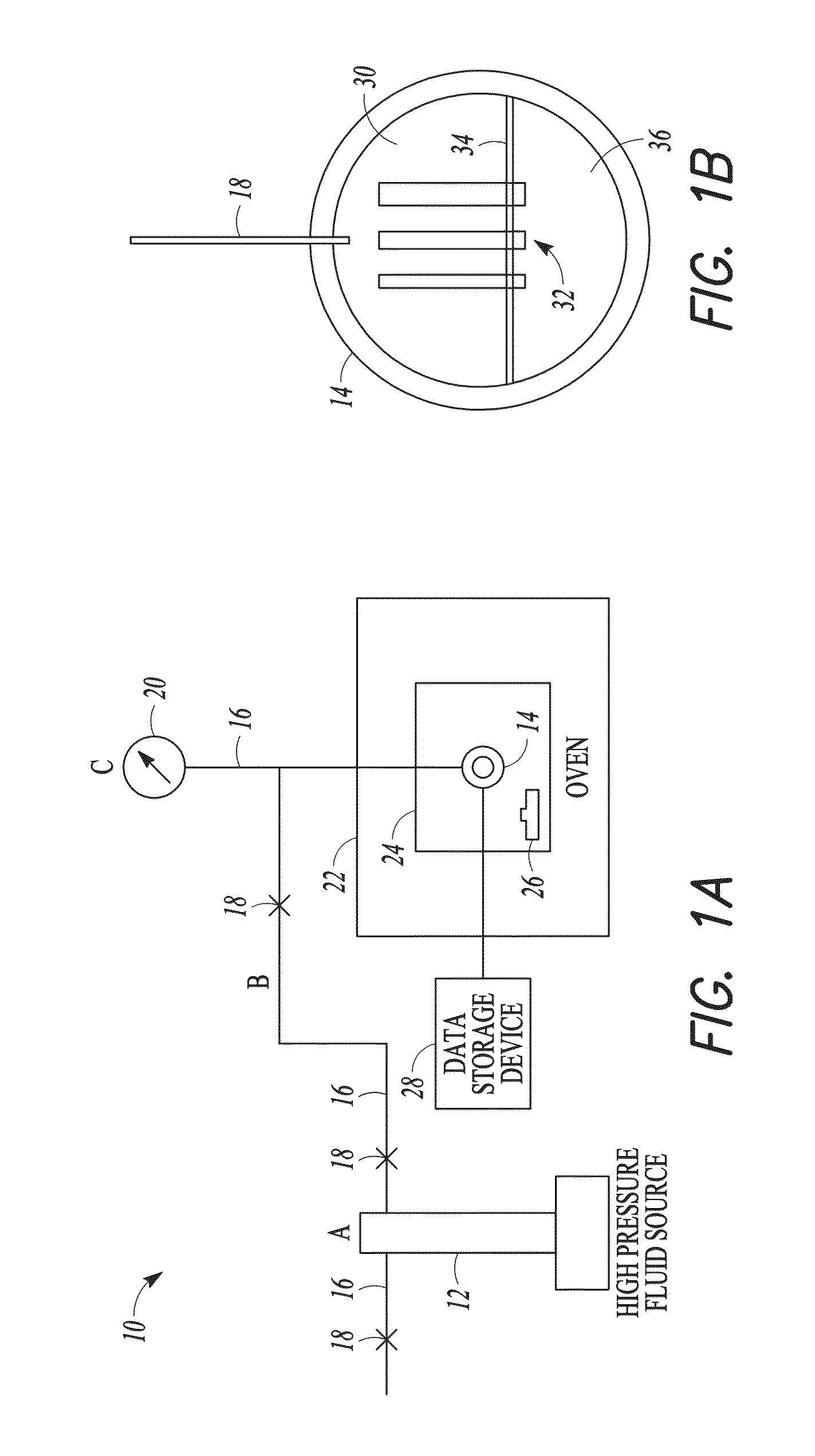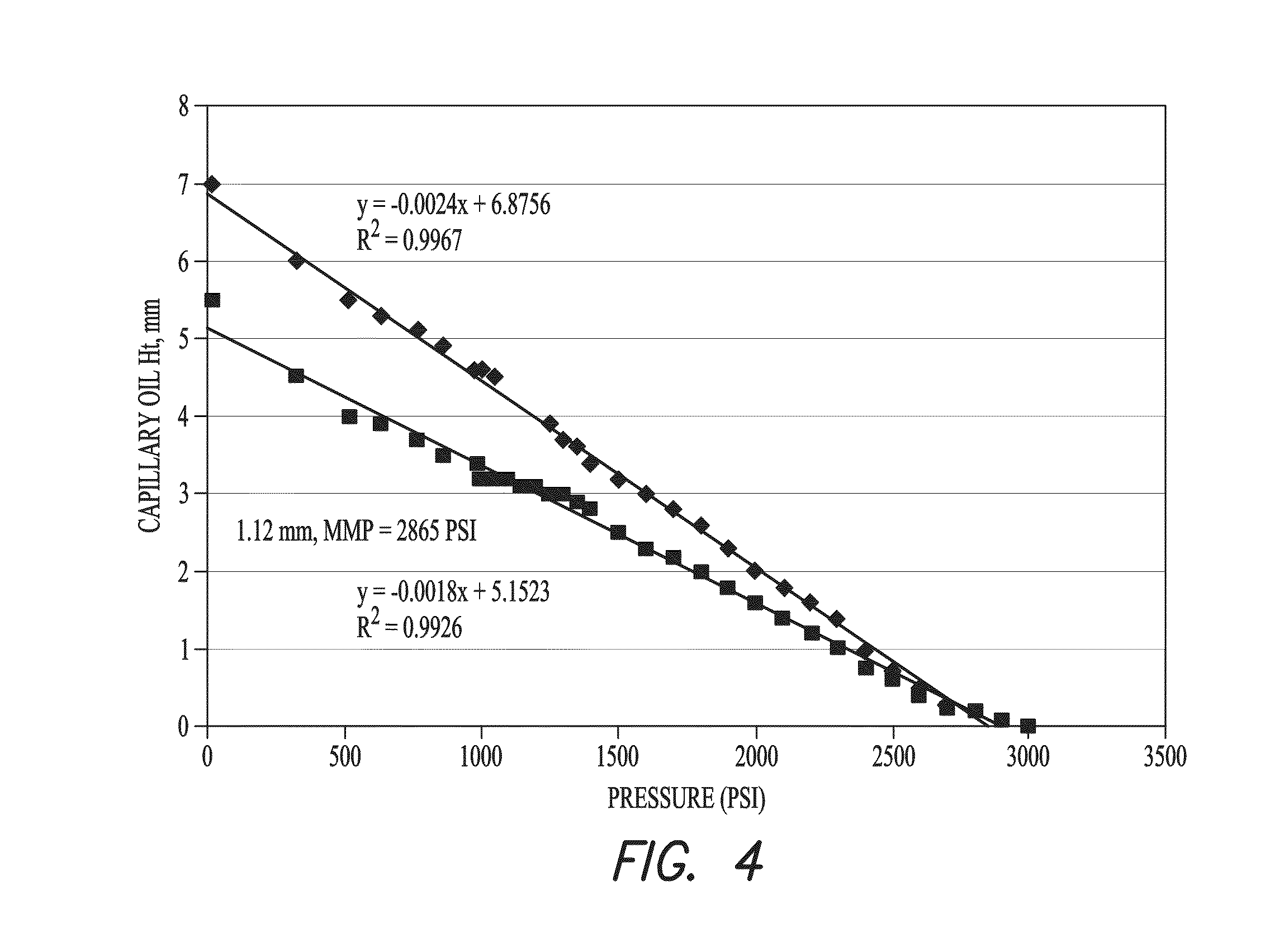Sampling an oil composition and determining minimum miscibility pressure of an oil compositon with a fluid
- Summary
- Abstract
- Description
- Claims
- Application Information
AI Technical Summary
Benefits of technology
Problems solved by technology
Method used
Image
Examples
embodiment 1
[0067 provides a method of determining a minimum miscibility pressure of a fluid with an oil composition, the method comprising:
[0068]placing a fluid into a pressure chamber at a first pressure, the pressure chamber comprising at least one capillary tube having one end disposed in an oil composition in the pressure chamber, wherein the fluid comprises at least one of a gas, a liquid, and a supercritical fluid;
[0069]measuring a height of the oil composition in at least one of the capillary tubes;
[0070]repeating the measuring for at least one cycle using a second pressure different than the first pressure; and
[0071]determining the minimum miscibility pressure of the oil composition with the fluid by extrapolating the pressure at a height of the oil in the at least one capillary tube of zero from the two or more measurements of the height of the oil composition in the at least one capillary tube.
[0072]Embodiment 2 provides the method of Embodiment 1, further comprising equilibrating pr...
embodiment 27
[0097 provides a method of flooding a subterranean formation with a fluid, the method comprising:
[0098]obtaining or providing a maximum pressure for a subterranean formation;
[0099]performing the method of any one of Embodiments 1-26 using as the oil composition a sample from the subterranean formation or that substantially resembles a sample from the subterranean formation;
[0100]adjusting the composition of the fluid and repeating the performance of the method, until at least one fluid composition is determined that has a lower minimum miscibility pressure with the oil composition than the maximum pressure for the subterranean formation; and
[0101]performing a flooding treatment of the subterranean formation using the fluid at a pressure that is equal to or above the determined minimum miscibility pressure and below the maximum pressure for the subterranean formation.
embodiment 28
[0102 provides a method of determining a minimum miscibility pressure of a fluid with an oil composition, the method comprising:
[0103]placing a fluid into a pressure chamber at a first pressure, the pressure chamber comprising a plurality of capillary tubes each having one end disposed in an oil composition in the pressure chamber and each having a different inner diameter, wherein the fluid comprises at least one of a gas, a liquid, and a supercritical fluid comprising at least one of carbon dioxide, nitrogen, methane, ethane, propane, hydrogen sulfide, n-butane, iso-butane, natural gas, natural gas liquids, and produced gas, wherein the oil composition comprises at least one of crude oil, a crude oil fraction, a mixture substantially resembling crude oil, and a mixture substantially resembling a crude oil fraction;
[0104]measuring a height of the oil composition in each of the capillary tubes;
[0105]repeating the measuring for at least one cycle using a second pressure different tha...
PUM
 Login to View More
Login to View More Abstract
Description
Claims
Application Information
 Login to View More
Login to View More - R&D
- Intellectual Property
- Life Sciences
- Materials
- Tech Scout
- Unparalleled Data Quality
- Higher Quality Content
- 60% Fewer Hallucinations
Browse by: Latest US Patents, China's latest patents, Technical Efficacy Thesaurus, Application Domain, Technology Topic, Popular Technical Reports.
© 2025 PatSnap. All rights reserved.Legal|Privacy policy|Modern Slavery Act Transparency Statement|Sitemap|About US| Contact US: help@patsnap.com



